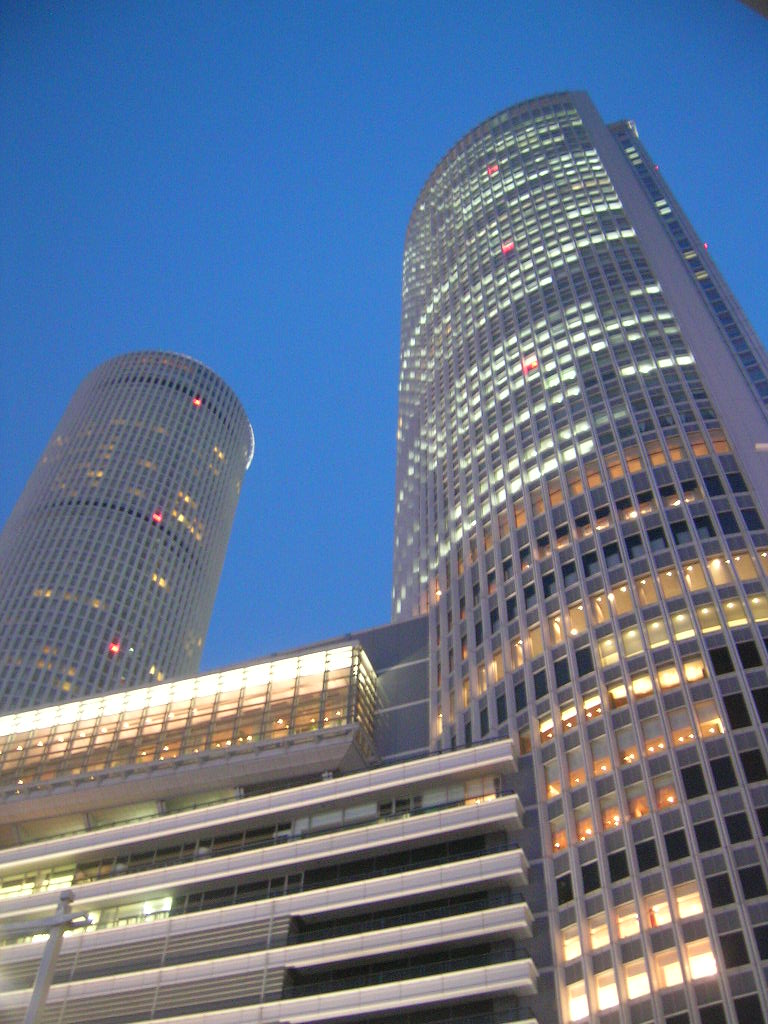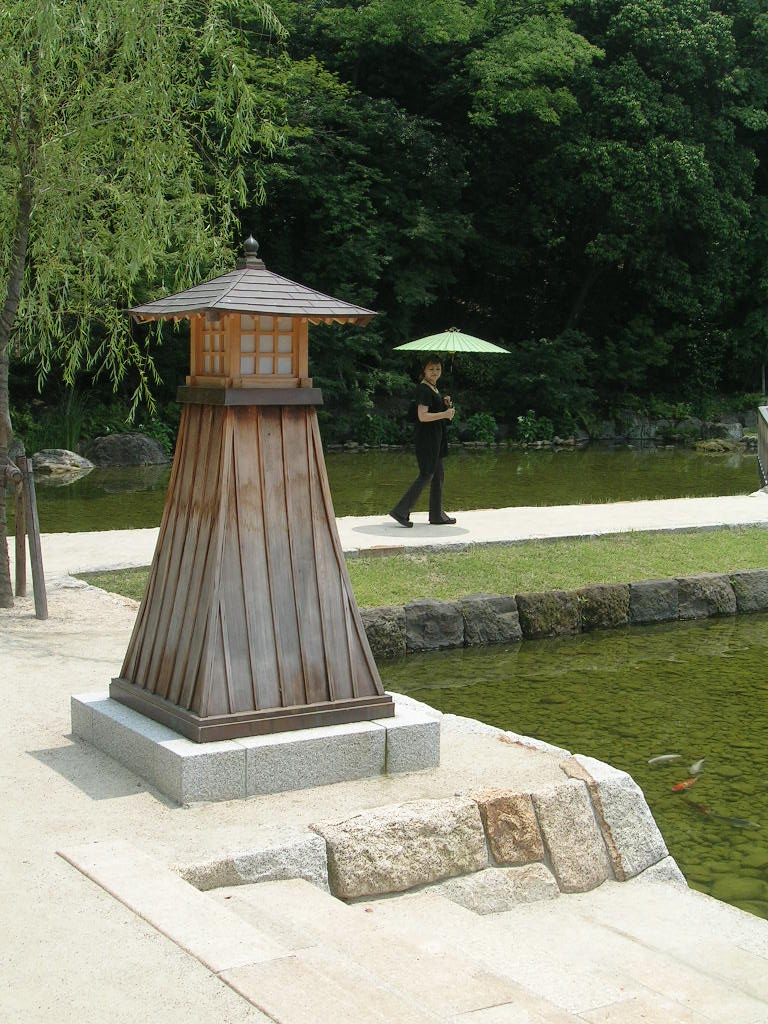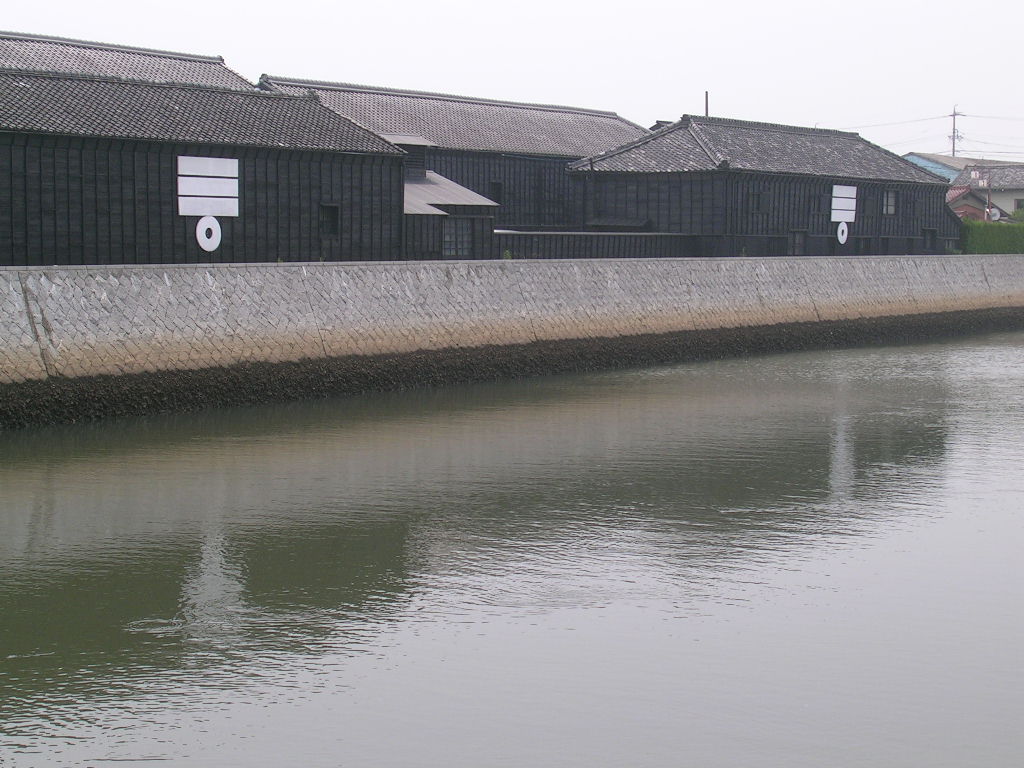By: Daniel J. Stone, JET Program ALT 2004-2007, Saitama-ken In preparing for my journey to the Aichi Banpaku (World Expo), I asked a group of 8th graders in Saitama Prefecture various questions by using the grammar point, “than”. For example, “Is Nagoya bigger than Yokohama?” Overwhelmingly, they responded, “No, it isn’t.” Ironically, Residents of Nagoya consider their city the third largest city in Japan with Osaka being the second largest. So, who’s right? Actually they both are. While Yokohama City is bigger than Nagoya City, Nagoya, the capital of Aichi Prefecture, is Japan’s third largest metropolitan region, known as the Chuukyou Metropolitan Area. The Ōsaka-Kōbe-Kyōto metropolitan region is the second largest in Japan. Nagoya is located on the Pacific coast in the Chuubu region on central Honshu Island which has made the Aichi region one of Japan’s largest commercial centers. Due to the addition of Chuubu Centrair International Airport (NGO), a new facility opened in 2005 and built on an artificial island south of Nagoya, the Aichi area now provides international travelers direct access to Central Japan. Previously, international travel mainly went through New Tokyo’s Narita Airport (NRT) or Osaka’s Kansai International Airport (KIX). If traveling by ground better suits your needs, the Nagoya Station, the world's largest train station by floor area, is on the Tokaido bullet train line. With only three stops from Tokyo Station by using the bullet train’s Nozomi service, I was able to travel to Nagoya in about 90 minutes.
History of Nagoya
During Japan’s Edo Period, Japan’s era of 265 years of isolation (1603-1868), Nagoya developed as the castle town of the Owari, one of the three branches of the ruling Tokugawa family. Tokugawa Ieyasu began construction of Nagoya Castle in 1610 on the Nagoya Plateau that offered a link to the sea by uniting Japan through his victory at the Battle of Sekigahara. The residents of the former castle town of Kiyosu moved here, the moving process is called Kiyosu-goshi, and a new city was created. Since its founding, Nagoya steadily developed into the castle town for the leading family of the three Tokugawa clans. During this time, its foundation as a commercial town was also established, allowing for Nagoya’s dramatic rise to become one of Japan’s major cities, after Edo (present day Tokyo), Kyoto, and Osaka. Much of the city, including most of its historic buildings, was destroyed in the air raids of 1945. During the American-led allied occupation following World War II, Nagoya was rebuilt and is one of Japan’s modern-day major cities, complete with “American-style” spacious streets and sidewalks (unlike Tokyo, for example). Nagoya, like the rest of Japan, recovered from the devastation of war and continued as one of the Japanese capital of the arts. Artistic practices such as drama, Noh and Kyogen theater, tea ceremony, and ikebana have prospered in Nagoya. Today, the area between Nagoya Castle and the Tokugawa-en, the former area for the residences of the warrior families, has been cultivated as Nagoya’s “Cultural Neighborhood”. This neighborhood is being turned into an area in which nature is blended with the urban landscape. The focus of this Cultural Neighborhood is the former residence of Kawakami Sadayakko, Japan’s first actress. It has been restored to its original appearance, a blend of Japanese and Western architecture, when she lived there during the Taisho period (1912—1926).
Main Destination- Nagoya
The Grand Court Hotel is located near the Nagoya Boston Museum of Fine Arts just outside the Kanayama Station on the Kisei Line from Nagoya Station. This hotel is a 3-star "Japanese Business Hotel" and has been the most “Western” hotel that I’ve stayed at in all my travels of Japan. This hotel was available on the pricy side (JPY8000 per night) and provided a breakfast buffet, standard lodging on the spacious side with TV that had one English-language channel, CNN. Like most Japanese cities, the most economical and hassle-free mode of transportation is by train and subway. For those travelers that know there way around Nagoya and can speak conversational Japanese (I had only been living in Japan as an English teacher for nine months at the time of my visit), taking a taxi is another good travel option. So, with a well-worn edition of “Lonely Planet” by my side and my first digital camera, I ventured off from the Kanayama Station area to see the sights while I was in Aichi’s big city.
Must see places in Nagoya
Nagoya Castle was built in the beginning of the Edo Period for one of the three Tokugawa family branches, the Owari. Consequently, Nagoya developed into an important castle town and ultimately one of Japan's largest cities. One word of caution is that the castle closes its doors around 5PM so it is best to visit this place in the morning or early afternoon.
Sakae (Nagoya’s Downtown District) is highly recommended to get orientated for newcomers to Nagoya. In between the Nagoya Station and Sakae Station, several high-rise buildings, shops, restaurants and pedestrians are in this district. An excellent photo opportunity is below the JR Central Towers outside of Nagoya Station.
The Tokugawa Art Museum in Nagoya ranks as the third oldest privately endowed museum in Japan. At the core of the collection are objects inherited from the first shogun, Ieyasu. The Owari, like other great daimyo, also treasured the art from earlier generations. Thus the Museum has come to own most of the extant sections of the twelfth century Illustrated Tale of Genji. The museum is broken into six exhibit rooms with them being “The symbol of the warrior”, “Daimyo’s tea room”, “Daimyo’s residence, “Noh Theater”, “Furnishings of elegant living”, and “Flowering of courtly tradition”. Nagoya’s Italian Market was built in an effort to revitalize Nagoya’s harbor area in 2005. The Italian Market is very authentic with Italian restaurants, grocery stores, and a variety of department stores selling products imported from Italy. Noritake Garden is the home of the leading company in the ceramics industry, Noritake. With a history of more than 100 years the Noritake Garden was built on former factory grounds and introduces the company and its products, while providing recreational space in the middle of Nagoya.
Outside of Nagoya
Toyota Museum, located in Toyota City. is the home of (arguably) the number one seller of automobiles in the world. Toyota’s museum displayed their first cars and trucks ever made to the cars and truck that are being made today and everything in between. Inuyama Castle is the oldest castle in Japan, and is preserved in its original state. The castle lies on the southern side of the Kiso River. It was built about 460 years ago, and its Momoyama-style donjon is designated a National Treasure. Inuyama-Jo is very special in this regard, being the only privately owned castle to be designated as such. Inuyama is a shrine that surrounded by river on one side, a forest on the other side. Meiji-mura Museum currently has over sixty Meiji buildings. The Meiji Restoration was a period in which Japan opened its doors to the outside world and laid the foundation for modern Japan by absorbing and assimilating Western culture and technology. The highlights were the elaborate churches that were established in Japan during the era and a large sake brewery. Ichiro Suzuki’s Baseball Museum, located in Toyoyama City, Aichi Prefecture is the home of all things Ichiro, the first “everyday” Japanese baseball player to play in the Major Leagues. The museum is run by Ichiro’s father who earned the nickname, “Mr. 5:30” due to leaving work early promptly at 5:30 each afternoon to coach his son at the batting cages near the airport. Handa City, a suburb of Nagoya, is known for its elaborate floats and ancient robots. At the Handa City Museum, several floats were on display, and a demonstration was given where a doll was wound up to take a glass of sake 10 feet to a person. Another doll was wound up, and it shot arrows from a bow.
The world headquarters of Mizkan Corporation, with its 10 manufacturing plants in Japan and 10 additional plants in North America, initially began due to Tokyo’s demand for their rice vinegar during the Edo Era. Today, the headquarters’ storage facilities look the same as they did in the Edo Era with their jet-black buildings on both sides of the city’s river. During the Edo Era, barrels were loaded onto ships and the river was used to transport the barrels of rice vinegar north to Tokyo. This can be looked into in depth at the Mizkan Vinegar Museum. Mizkan’s products can be found in the US at your local gourmet grocery outlets or on the “International” aisle at your everyday grocery store.
Must dine dishes of Nagoya
Nagoya is known for its miso, a paste of fermented soybeans which makes the Japanese signature dish, miso soup. There are three kinds of miso: red, white and a mix of the two. Miso paste can be found at most gourmet grocery outlets in the US. One signature dish of Nagoya is Miso Pork Cutlet. Pork cutlet (tonkatsu) is known as Japanese “down-home” food and is usually served with shredded, uncooked cabbage and a side of white rice. What makes Nagoya’s pork cutlet special is the addition of a miso sauce. Other Japanese dishes found in Nagoya made famous by adding miso are Miso Simmered Udon, Miso fried port skewers (kushikatsu) and miso pork fries.
Special tidbits to know about Nagoya
In 1992, Hollywood set the scene of one of that year’s blockbuster films in Nagoya with its version of Japanese baseball, Mr. Baseball. The film stars Tom Selleck (Magnum, PI), whose character loosely portrays the real life American slugger Randy Bass, who nearly broke the Japanese single season home run record while playing in Japan during the 1980s. Selleck’s character played for the Nagoya Chunichi Dragons, and throughout the movie several shots can be scene of various baseball stadiums in Japan. If time allows, it is recommended to take in a baseball game while in Japan. The Japanese season coincides with the American season. Another thing to remember is that although the number of visitors to Nagoya does not approach that of Tokyo, the city is the hub of Japan’s third major commercial and industrial region; therefore it is important to reserve accommodation in advance. Having spent most of my time in Japan in the Saitama/Tokyo area, the biggest difference I noticed in Nagoya was how spacious the roads and sidewalks were outside Nagoya Castle. A pedestrian in Nagoya can actually walk down the sidewalk without the annoying cyclist from behind ringing their bell, as most of Nagoya’s sidewalks are wide enough so that a cyclist can ride down one side of the sidewalk and pass pedestrians on the other side of the designation portion of the sidewalk.
Recap - How to get there, where to stay and getting around
Airline - Due to the recent addition of Chūbu Centrair International Airport (NGO), many international carriers from North America fly directly into the Nagoya area.
Lodging - The Grand Court Hotel near the Nagoya Boston Museum of Fine Arts is just outside the Kanayama Station. More affordable options can be found in the latest edition of “Lonely Planet”.
Ground Transportation - With a variety of subway, Japan Rail and other privately owned lines, getting around Nagoya and the Aichi area can be done with little effort. Getting to Nagoya from other parts of Japan by using the Tōkaidō bullet train (shinkansen) is also convenient if traveling between Osaka and Tokyo. Unlike Naha, Okinawa, it is not recommended to travel around Nagoya by car due to limited parking and expensive lots. Although the streets of Nagoya are more spacious than in Tokyo, the streets of Nagoya are reminiscent to my days in the rat race of Los Angeles.
Daniel J. Stone’s first time outside of the Kanto Plain was in 2005 in Nagoya as a guest of the Whitfield-Manjiro Grassroots Summit, an annual grassroots exchange that alternates yearly between American and Japanese cities. Since then, he and his wife, Mayuko, have traveled to all of Japan’s eight regions. He served on the Japan Exchange Teaching Program in Saitama Prefecture from 2004-07.































































